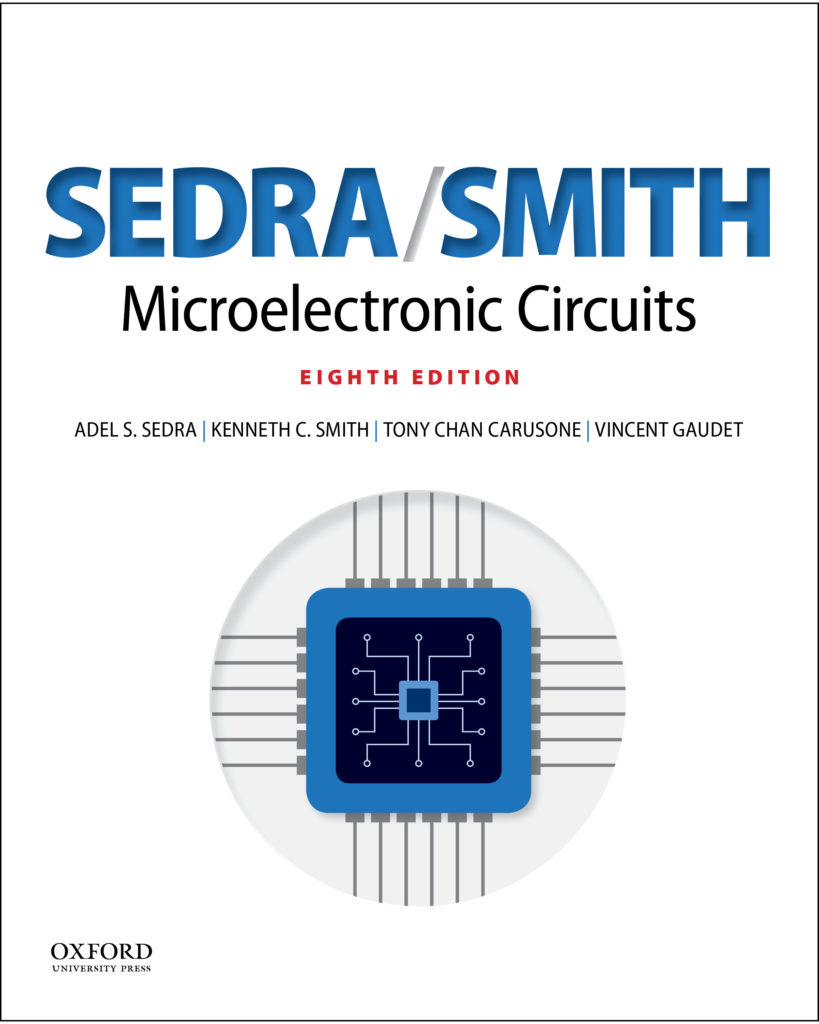Books, Online Resources, and more…

Microelectronic Circuits, 8th Edition
The most comprehensive, flexible, accurate, and design-oriented treatment of electronic circuits available today. The new 8th edition is available as an enhanced e-book — ideally suited for online and in-person learning.
New in the 8th edition:
- The 8th edition has been streamlined using surgical edits, reducing its length by about 200 pages while preserving all the features instructors and students expect from the world’s leading microelectronics textbook.
- Updated examples, exercises and end-of-chapter problems to reflect the modern trends and advanced in microelectronics.
- End-of-chapter problems are now categorized within each section as “essential” or “supplementary”, making it easier for the instructor to select problems and for students to plan their studies.
- A popular feature, the Summary Tables, will be expanded, improved, and consolidated at the end of the book for easy reference.
- The 8th edition has been revamped for the digital age, with online resources to support students’ learning wherever they are. The ebook makes this edition even easier to learn from. Pop-ups over figures and equations provide quick reference, while collapsible tables preserve the reading flow. The show/hide function on each problem’s solution eliminates the need to constantly flip to the end of the book.
- New 40 instructor videos of the authors solving examples linked to pivotal concepts in the material.
- New Spice supplementary material for both PSpice and LTSpice.

Analog Integrated Circuit Design, 2nd Edition
Like the original, the second edition offers coverage of contemporary topics. An intuitive approach and emphasis on practical design and analysis continue to make it the reference for both students and practicing analog designers alike.
New in the 2nd edition:
- New chapters make the text accessible to new analog circuit designers:
- Frequency response
- Feedback analysis
- New examples and problems based upon more modern process technologies
- Low voltage design topics including:
- Subthreshold MOS operation
- Low-voltage opamp design
- Low-voltage bandgap reference
- New topics to support the teaching of design in deep submicron CMOS technologies including:
- MOS parameter extraction
- Mismatch & variability
- Proximity effects
- Consolidation of introductory CMOS and bipolar material to facilitate teaching either independently
- Linear voltage regulators
- Noise in sampled circuits
- 1.5-bit per stage pipelined converter and other new A/D converter architectures
- Complex signal processing
- All-new modern coverage of phase locked loops including phase noise and jitter analysis
- Key points are highlighted and summarized for each chapter
- Online spice models and examples